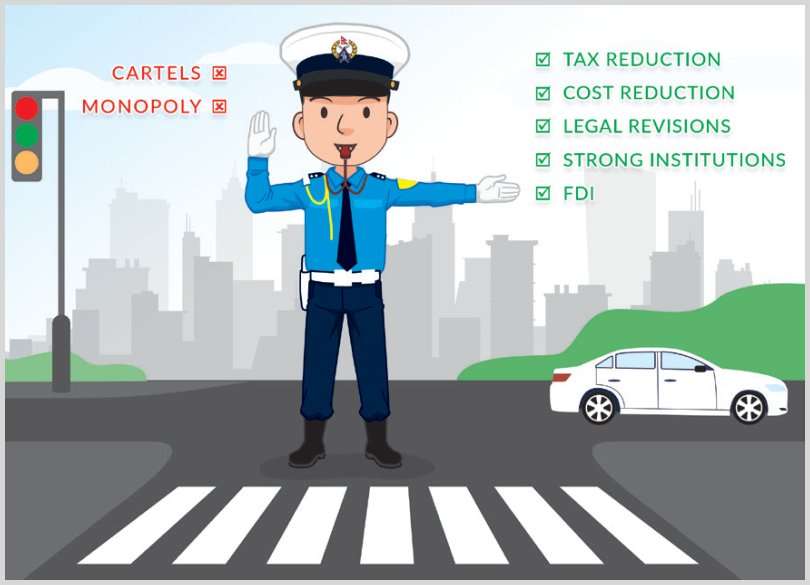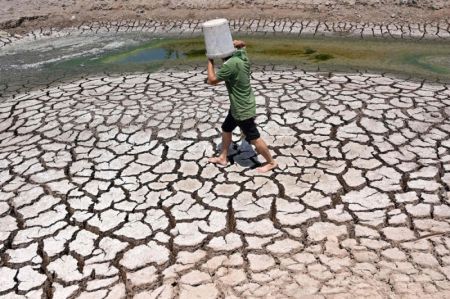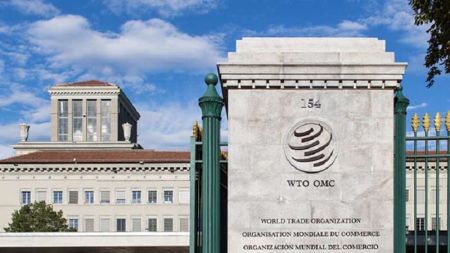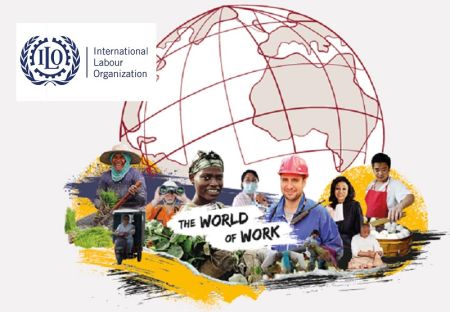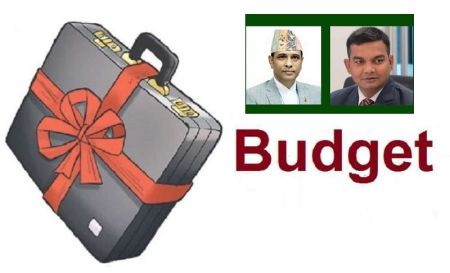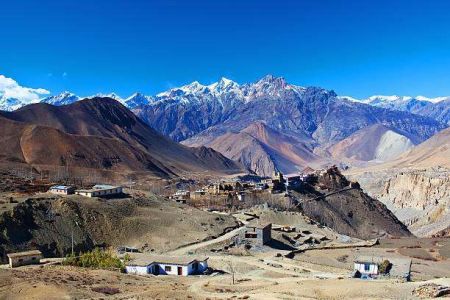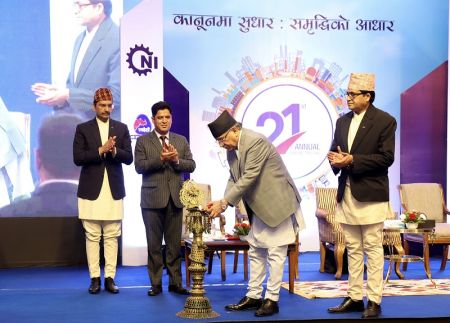Economic reforms was the buzzword immediately after the political change of 1990. In fact, the political change was itself caused mainly by deteriorating economic situation during the late Panchayat period, argue some economists. A comparison of some economic indicators immediately before and after the 1990 reforms substantiates such arguments.
Why reforms stalled
But the reforms drive stagnated after the midterm elections were announced in July, 1994. And there are a number of reasons behind this.
The main reason behind this policy stagnation was the rise of the leftists (first CPN-UML and then Maoist insurgency and their eventual position in the government). Left-leaning economists are strongly against the economic reforms throughout the world and that was the case in Nepal too.
The leftist opposition to the reforms is based on the fact that these reforms were initiated because of the conditions put forth by donors like the World Bank and International Monetary Fund (IMF) while providing financial and technical assistance that developing and underdeveloped countries like Nepal needed so desperately. The leftists have always been vocal critics of the policies of these Bretton Woods institutions.
But, even the CPN-UML government that came to power after the November, 1994 general election or the Maoists that came to power after the 2006 peace deal did not try or succeed in reversing the economic reform process. It is worth noting that some of the significant reforms were legislated when the communists were in power. For example, the Value Added Tax (VAT) law was enacted in November, 1997, when the finance ministry was led by Bharat Mohan Adhikari, senior leader of the CPN-UML.
Yet, the private sector was not confident enough. Several private sector investment proposals were shelved, due largely to the terrorist activities of Maoists. And the process of reforms did not move ahead as required for some other reasons which again were associated with the rise of the left. Due to the rise of the communists, industries suffered prolonged labour strikes. The fear of Maoists drove away youth from the villages. The government then came up with programs to facilitate the youth to go to foreign job markets. This led to the fall in agriculture and industrial activities. Even after the end of Maoist insurgency, the country was focused on drafting a new constitution which sidelined the economic reforms agenda.
Some obstacles that the reforms drive faced were from the private sector cartels -- the very group that benefited from the reforms. They are pressing the government to pursue reforms that benefit them, but are not giving similar importance to those that go in favour of the consumers.
One example of this is the Safeguard, Anti-Dumping and Countervailing Act that was enacted in 2019. Though this law is a part of the overall reforms, it particularly favours the private sector businesses rather than general people and it was enacted in response to a strong demand from the private sector. Another glaring example is the law related to protection of Intellectual Property Rights (IPRs). Though this law has already been drafted and even tabled in the parliament, it is now on the back burner. Lack of this crucial law is one of the obstacles to attracting foreign direct investment (FDI) in the country. Some 32 laws drafted as part of the economic reforms are still pending either in the parliament or in Ministry of Law.
Regarding FDI, one interesting experience in Nepal is that FDIs with a strong Nepali party as partner are successful here. Firms wholly owned by foreigners or those having a local partner who is not so connected in the upper level of the society have failed here. Colgate-Palmolive and Nepal Battery are among such firms. This indicates FDIs will be attracted if Nepali businesses first feel confident and relay the same to their foreign partners. The government, therefore, cannot neglect the voice of the Nepali businesses, especially the larger ones.
Nepali private sector has long been demanding that the government offer them all the facilities that it is offering to the foreign investors. There are several examples of the government offering better facilities to foreign investors compared to domestic investors. It is another issue that FDI is not coming as expected despite such offers.
Another reason for the failure of the reforms is weak or no implementation of the declared reforms. Insolvency Law, Secured Transaction Law, among others, are some of the examples.
Result of Frustration
The new discussions on reforms is rather a result of the frustration from the negative results in various areas, which the pro-reform people think is due to the incomplete reforms of early 1990s and the anti-reformists blame on the reforms idea itself.
The reforms initiated in early 1990s in Nepal are wrongly interpreted as the first generation reforms. That is why the term ‘second generation reform’ is used in the current discussion. The boxes may help summarise the concepts of different types of reforms. As the boxes show, the term first generation can be used for the points that are included in the so-called “Washington Consensus” and the term second generation reform can be used for the points under the “Augmented Washington Consensus”. Left-leaning economists are largely in favour of the so-called “Beijing Consensus”. This may be the reason why they are opposing the MCC grant that is being proposed by the United States while supporting the loans under China’s Belt and Roads Initiative (BRI).
Successes & Failures of First Generation Reforms
Before deriving any conclusion, it would be worth analysing the successes and failures of the so-called first generation reforms.
Evaluating the success of India’s first generation economic reforms in his article dated 2016 and available on Cato Institute website, Indian Economist Swaminathan Aiyar says, “The past 25 years can be largely summed up as a story of private‐sector success and government failure, of successful economic reform tainted by institutional erosion. Although many old controls have been abolished, many still continue, and a plethora of new controls have been created in areas relating to the environment, health, tribal areas, and land. What leftist critics have denounced as an era of neoliberalism is better called neo‐illiberalism. India remains in the bottom half of countries measured by indicators of economic freedom. Social indicators of education, health, and nutrition have improved much too slowly, and India has been overtaken in some indicators by poorer Bangladesh and Nepal.”
While this summary is applicable also in Nepal’s case, it is worth noting down the major benefits or successes of the first phase of reforms that are still not complete.
Thanks to the liberalisation/privatisation policies, the business activities expanded and as a result the choices of the people expanded. Banking and financial services, telecommunication and civil aviation are some examples of it. Government’s liabilities in the inefficient Public Enterprises (PEs) were growing year after year putting pressure on public finance management. That liabilities came down substantially after some PEs were privatised or closed down. Those privatised or closed down were the ones that were globally uncompetitive or noncompetitive also at the domestic level.
Business activities expanded as the private sector was allowed to enter various hitherto state-controlled businesses such as financial services, telecommunication, electricity generation etc. Private sector’s involvement in electricity generation created a strong base for the current situation where Nepal is now in a position of exporting surplus electricity.
As business activities expanded, the government's tax collection increased gradually, helped also by legal reforms such as new income tax law and introduction of VAT, replacing a number of other tax laws that had a number of flaws. As a result, the government’s tax collection stands at nearly 25% as compared to the GDP which is the highest ratio in the entire South Asia. During the Panchayat period it was estimated to be around 5 percent or so.
The results were positive also in economic growth rate. In the years immediately after the reforms started, the economic growth rate reached as high as 5 percent, up from 2-3 percent during the Panchayat period. The growth was driven largely by the service sector which now accounts for some 52 percent of GDP.
Even the reforms in the international trade sector resulted in positive outcomes. As Nara Bahadur Thapa, former executive director of the Nepal Rastra Bank, says the country is still in a comfortable situation in foreign exchange reserves despite the growing trade deficit for so long, thanks to the reforms.
Failures
However, the so-called first generation reforms failed to bring about any positive change in agriculture and manufacturing. Both of these sectors declined gradually after the reforms were initiated. As a result, the country’s trade deficit went on growing and international trade gradually started concentrating on a single country - India. The trade diversification was much better in the Panchayat period.
The Nepali economic reforms failed in attracting FDI too, while in India, it helped tremendously to attract FDI. Most importantly, crony capitalism thrived. Some major sectors of the economy are controlled by some cartels. Competition does exist on paper, but competitors have banded together in associations and are exercising their strength in policy capture.
Growing Inequality
Though the economy expanded, and so did the choices of the people, the economic growth is found to be accompanied by growing inequality. The National Review of Sustainable Development Goals published by the National Planning Commission (NPC) in June, 2020 shows that consumption inequality measured by Gini coefficient was 0.30 in FY 2018/19, and 0.33 in 2015. Similarly, the income inequality, also measured by Gini coefficient, was 0.32. The share of the bottom 40 percent in total income and total consumption were 20.4 percent and 25.7 percent, respectively. The review targeted to reduce consumption inequality from 0.33 in 2015 to 0.16 in 2030 and reduce income inequality from 0.46 to 0.23. Similarly, the Palma ratio was 1.3 in FY 2016/17; and the new target is to bring it down to 1 in 2030. In FY 2018/19, the ratio of the richest quintile of income group finishing primary school on time was 1.21, and the ratio of richest vs poorest children free of stunting was 1.54. The Social, Economic and Political Empowerment Index was 0.5, 0.45 and 0.71, according to the review.
However, the major reason for the failures, as pro-reformists view, is the incomplete reforms, similar to the case of administering half dose of medicine to the patient or giving the next dose after such a long gap that the effect of the first does dissipates. While some aspects of the reforms were implemented, the other aspects that were the requisite parts of the same reform were either unimplemented or implemented after a long gap. The reforms related to agriculture and industry after Nepal became a member of the World Trade Organisation (WTO) provides a good example. While imports of agricultural and industrial products were eased, reforms needed to improve the competitiveness of domestic agriculture and industry which were neglected. This is one reason behind the widening trade deficit and decline in agriculture and industrial sectors.
Results of the Failure
These failures have been providing even more pretexts in the armoury of the anti-reformists. As a result, there are growing instances of restrictive economic regimes. Though no point in the reform process has been reversed, we can see some signs of the licence regime being revived, perhaps due to the rise of the powers of the cartels. Pro-reformists call it the growth of crony capitalism. And there are plenty of signs of cronyism thriving.
Need for Next Reforms
The question now is not whether to reform further. It is rather “what reforms and where”. Because regardless of whether one is pro-Washington Consensus or pro-Beijing Consensus, both are arguing for reforms. There is no point in sticking doggedly to one of them. There surely are weaknesses in them. For example, liberal reforms of the 1990s could not avoid the Asian Financial Crisis of 1997 and the subsequent global financial crisis of 2008. Similarly, many points of Beijing Consensus are not compatible with the new political structure of federalism based on the principles of equality, social justice and multi-party democracy. Therefore, the focus has to be on reforms that are actually needed to meet some goals which are already there in the constitution and some others and as per the changed context.
As Rameshore Khanal, Former Secretary, Finance of Government of Nepal, puts it, the reforms needed now can be grouped in three categories: (1) those reforms that were started 30 years ago but not completed yet, (2) those reforms that are required now in view of the changes in the global and national situation and (3) those reforms that are still not started.
According to him, in the initial phase of reforms, a lot activities were opened up, but the system to regulate them was not introduced. For example, in education and health sector, which are very sensitive from societal perspective, there are no regulators to check if the equipment used, the physical facilities available and method of service delivery are up to the standards. Other countries have these systems in place and the problems in those sectors are much less.
He adds, reforms are needed not only in economic sectors, but also in other areas like governance and politics. According to his view, the reform leaders of initial period were focused more on economic reforms, not on political reforms. However, later when Khanal was still in the bureaucratic leadership, some efforts were made to introduce a system of providing cash assistance from the government to political parties on the basis of the number of votes they secure in the latest elections, this could not be pushed through. Had such system been introduced with other necessary supplementary measures, the corruption related to elections and from its results would have been controlled to a very large extent, Khanal views. He gives example of USA where they also have a system under which a limit is put on the donation that the political parties can collect, how the money can be used and how the donors can show such money in their tax returns and get tax concession.
Based on the above background, some areas of reforms needed as the things stand today have to be focused on following overarching goals:
Reducing inequalities
Level of inequality is already very high, much worse than it was during the Panchayat days. Such levels of inequalities are a fertile ground for social unrest which will reverse the reforms and their good aspects that are already there.
Ensuring eco-friendly and sustainable growth
Though sustainable economic development is a buzz phrase and there is a set of parameters defined by the United Nations in this regard, and the country has already made some good progress on this front, there are still a lot of things to do. It seems that the first phase of reforms were detached from the sustainability aspect. Particularly, the environmental conservation aspect has gained growing importance. Therefore, the new sets of reforms also need to be directed towards this.
Stop cartels, rent seeking, crony capitalism
Some criticisms of the first phase of reforms are based on the growing inequalities and that is partly because of the rise of a special category of vested interest groups that are identified as monopolists, rent seekers and cronies. The new phase of reforms should target to reduce and stop this altogether.
Expanding tax base and reducing tax rates
Tax system in Nepal has a number of flaws. It is seemingly progressive, but is regressive in actual practice. Though the tax to GDP ratio is very good, most of the tax comes from VAT and import duties. The burden of such taxes is high on the general people. This can be reformed by reducing the rate of VAT from existing 13 percent and adopting two or three different rates lower than 10 percent. And VAT collection from domestic production is estimated to be only 4 percent of the total revenue while VAT on collection accounts for about 40 percent of the revenue. This shows most of the VAT collection is from imports and the government seems happy about that. This needs to be corrected.
The possible loss in state revenue by reducing VAT can be set off by expanding the tax base. Another method can be taxing large farmers. At present there is a system of providing subsidies on agricultural inputs which is not reaching the actual farmers as it is gobbled up by large farmers and pseudo-farmers who have good connection with the power centres and bureaucrats.
Creating resilience
The reforms should empower economy to withstand external shocks such as global or regional pandemic, natural disasters like Tsunami (that cause supply and market problem), and regional/global financial crisis
Completing the pending Generation 1 reforms
There are plenty of examples of half-implemented reforms already accepted in policy. One example is in the power sector. Though hydropower generation is open (subject to licence) for the private sector, there is still monopsony as the buyer is only the state-owned Nepal Electricity Authority (NEA). Moreover, NEA also enjoys monopoly in power sales. And it also controls the national power supply grid. Though a separate grid company (Rastriya Prasaran Grid Company Ltd.) too has been in existence since 2015, it still does not control the grid. Thus, the power producers are not able to sell the power they generate to the end consumers such as power intensive factories. Some initiatives are being talked about to allow the power producers to sell directly to the end users, but it is still a pipe dream.
Further delicensing
Though many businesses can be opened and operated with registration of a company without going for a licence, licence regime still exists in sectors like transport services, tours and trekking, some agriculture activities, hydropower, telecommunication and financial services. The licence regime is cumbersome and allows the political leaders and bureaucrats plenty of room to play, thus encouraging cronyism and carteling. Even in those areas that have been delicensed, the situation is more or like the same as one needs to fulfil different steps and go around different ministries and departments before starting business.
Reducing costs for consumers and the producers
The overarching purpose of economic reforms should be making life of the general people further easier, by making them able to get cheaper products and services and making them able to choose from a large spectrum of professions to earn their livelihood. This is far from the reality at present. People are barred from enjoying goods that may be available cheaper to import. Protectionist measures are put in place even though these measures are not protecting the agriculture or industry that they are intended to protect. Sugar is one such example. So, whatever reform measures are to be taken, must be tested against these two criteria.
Encouraging FDI
Foreign Direct Investment (FDI) will help reduce the trade deficit by reducing imports and increasing exports. FDI operations such as Dabur, Unilever, Arti Strips, Britannia, Asian Paints, Berger and Kansai Nerolac substantiates this argument. Colgate Palmolive, Nepal Battery too did the same when they were operational for some years in Nepal. One successful FDI can serve as an encouraging sign for others to come in. But for a very long period now, no big new FDI is coming into Nepal. Policy unpredictability and obstacles posed by cartels are among the factors blamed for driving FDI away. The coming reforms should address this.
As Nara Bahadur Thapa, former executive director of the NRB summarises, “Remove the double lock policy in FDI and domestic private sector investment. Presently, there is one negative list as well as another positive list. Better to have a sensitive list, and rationalise that list.”
He also questions the logic of barring FDI in agriculture. “Youth are going abroad as there is low productivity in agriculture, and the low productivity is due to lack of investment,” he argues, saying: “Agriculture is not a holy cow.”
According to him, sensitive list can be based on defence and security considerations, education and environment, among other issues.
Reforms that help manufacturing and agriculture to thrive
One major point of criticism of the economic reforms is the stagnation and decline in agriculture and industry, resulting in a growing trade deficit. So, the next phase of reforms should focus on measures that revive these sectors.
Improving connectivity, investing in infrastructure
Another barrier to realising the country’s economic potential is poor infrastructure connecting different geographical regions and connecting producers with consumers as well as the country with international markets. Better infrastructure means lower cost of business and lower prices to consumers. It will also enhance the competitiveness of Nepali producers in the international market.
Allowing investment abroad
As Nara Bahadur Thapa suggests, Nepal should change the exchange rate control system. He suggests changing the law that is named Foreign Exchange Control Act. As the word “control” gives negative connotation, it is better to use some other positive words and change the specific provisions accordingly.
Also needed is capital account convertibility, Thapa suggests. “Though it is not necessary to go for full convertibility on capital account, we can start with limited convertibility there, specifying areas where it is convertible and gradually relax it on the basis of experience”. Similarly, he is for allowing Nepalis to invest abroad, by specifying processes and conditions so that it would be easy to take necessary corrective steps in case anything goes wrong. The conditions can be gradually relaxed further. “It may take some years, however, as it requires various other reforms as well”, he says. Thapa’s suggestion for allowing investment abroad is pertinent in view of various instances of Nepalis investing abroad coming to the fore. The existing law has not stopped Nepalis from investing abroad. Better to give them a legal way to do such business.
Strong IPR regime
Though the need for a strong system to protect Intellectual Property Rights (IPRs) has been felt and some efforts have been made in this direction, nothing concrete has happened yet. IPR law has been tabled in the parliament for approval, but it is not moving forward. It should be enacted, pronto.
Create institutional setup that facilitates economic activities (at present different ministries have different priorities, often contradictory & conflicting, thus inhibiting economic activities)
Sector, area-specific reforms
Reforms needed in some specific areas can be summarised below:
Privatise further. In the first phase, privatise or close down PEs that are either not in business or are losing money continuously, and are in no way important for public welfare. In the second phase, privatise or shut down all PEs.
In the financial sector, go for full implementation of Basel III, and amend foreign investment and investing abroad laws. Though Basel II is already in implementation, many of its points are not implemented. Points like Liquidity Coverage Ratio and Net Stable Funding Ratio are implemented, but the system to manage short-term, medium-term and long-term liquidity preparedness is still lacking. That is the reason why the banking system is facing problems like over-liquidity and liquidity crunch etc.
Energy & Hydropower: Though private sector is allowed in this sector through BOOT-BOT-BT or PPP method, a separate regulatory body is set up for this sector, a separate grid company too is set up, and idea of allowing the private sector in power distribution and trading is being discussed, they are still not implemented fully. Next steps should be implementing these ideas. Similarly, steps are needed to allow full participation of the private sector in petroleum business. Petroleum import is still under the government’s control. Though distribution of petroleum is given to the private sector, the present system has a lot of distortions and loopholes resulting in cartels and high prices for the consumers.
Manufacturing & Agriculture: There are many factors behind the stagnation of Nepal’s manufacturing sector. Once it was excessive unionism. Several steps were taken to address this, and now these problems are very low. However, import systems are still posing problems. Most of the industries are heavily dependent on imports for their major raw materials and intermediate materials. But the import duty structure is still in favour of importing finished goods. Likewise, Nepal’s manufacturing sector needs a lot to have backward integration with the primary sector and ancillary manufacturing. Contract farming, contract manufacturing, system of warehouse financing, etc. are the need of the hour. Though these ideas are frequently in discussion, they are still not being implemented.
Agriculture has a special perspective. Some previous reform measures are cited frequently as the reasons for stagnation in the agricultural sector. PEs like Jute Development Board, Sugarcane Development Board and Tobacco Development Board were scrapped in the first phase of reforms and, interestingly, the production of these commodities declined drastically after the reforms. While these PEs were closed down, some other PEs in agriculture continue to exist. For example Dairy Development Board and Tea and Coffee Development Board. Therefore, a rethinking is required here so as to revive agriculture while not putting unnecessary burden on the state coffers.
Stock market and commodities exchange
The importance of a well-functioning stock market and commodities exchange to the economy is immense. But the existing system in the Nepali stock market needs a lot of improvements and additions, while commodities exchange is absent. There were some strong logics for change in regulation in the past that resulted in closing down of the commodities exchanges that were in operations at that time. However, the alternate system is still not implemented though the law and regulations have already been prepared.
Opportunity from digital revolution
While undertaking the next reforms, we should capitalise the opportunities provided by the digital. This has ushered in the phase of knowledge-based exports which, if promoted and facilitated, can help reduce current account deficit.
Another area of opportunity is in entrepreneurship exports. Nepal has developed unique capabilities in some areas, such as tourism, enabling them to set up enterprises with little or no monetary investment to operate that type of businesses abroad. For example, Nepali tourism entrepreneurs can be competitive and in high demand in some other countries.
Though digital revolution has brought in tremendous opportunities in service delivery, including financial services (e.g. Ant Financing in China), one can only wonder why Nepal is not utilising this possibility. Digitisation seems to be capable of solving the know your customer (KYC) system related hassles of the general people, but Nepali authorities are surprisingly doing nothing in this direction.
The next phase of reforms should be based on digitisation as much as possible.
About private sector
Another point to consider is the questions being raised frequently about the private sector regarding lack of transparency, carteling, and unfair market practises etc. Though some laws are already in place to address these, they are not becoming effective. Our reforms initiative should take this into consideration. Good thing is, there are enough private sector players now who are strong supporters of such improvements.


